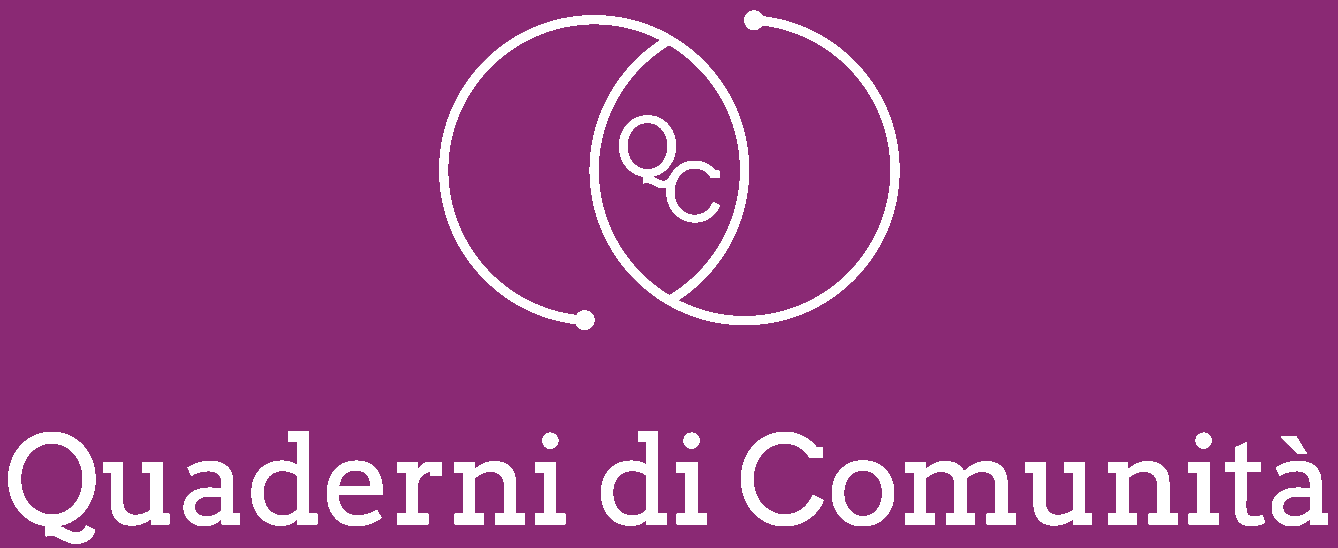Lockdown and self-representation: a reading on Instagram's media diet
DOI:
https://doi.org/10.61007/QdC.2024.1.268Keywords:
covid-19, lockdown, self-representation, online identity, digital narcissism, social networkAbstract
The research addresses content from emerging influencers with the highest engagement rates during the first Italian lockdown of 2020. The objective was to isolate and analyse the posts produced during the crisis in order to assess the media diet of the users of the Instagram social networking platform, detecting the expressive languages of the creators and the nature of the most successful posts according to a sociological and psychological reading to highlight the presence of potential narcissistic traits and their impact on the reputation of the analysed profiles.
References
Adami, E., & Jewitt, C. (2016). Social media and visual communication. Visual Communication, 15(3), 263-270.
Arundale, J. (2017). Identity, narcissism, and the other. Object relation and their obstacles. London: Karnac.
Bichi, R., Introvini, F., Pasqualini, C. (2020). “Stay at home, stay online”. In Rete durante il lockdown, in Istituto Giuseppe Toniolo, Giovani ai tempi del Coronavirus. Una generazione in lockdown che sogna un futuro diverso. Milano: Vita e Pensiero.
Bonini, T. (2020). L’immaginazione sociologica e le conseguenze sociali del Covid-19. In L’altro Virus. Comunicazione e disinforma-zioneal tempo del COVID-19. Milano: Vita e Pensiero.
Brailovskaia, J., Margraf, J. (2020). Predicting adaptive and maladaptive responses to the Coronavirus (COVID-19) outbreak: A prospective longitudinal study. International Journal of Clinical and Health Psychology, 20(3).
Buffardi, L. E., Campbell, W. K. (2008). Narcissism and social networking Web sites. Personality and Social Psychology Bulletin, 34(10), 1303-1314.
Cesareo, V., Vaccarini, I. (2012). L’era del Narcisismo. Milano: FrancoAngeli.
Gabbard, G. O. (1989). Two Subtypes of Narcissistic Personality Disorder. Bulletin of the Menninger Clinic, 53(6), 527-532.
Gaitanidis, A., Curk, P. (2007). Narcissism – A critical reader. London: Karnac.
Galea, S., Merchant, R. M., Lurie, N. (2020). The mental health consequences of COVID-19 and physical distancing: the need for prevention and early intervention. JAMA internal medicine.
Hess, A. C., Dodds, S., & Rahman, N. (2022). The development of reputational capital–How social media influencers differ from traditional celebrities. Journal of Consumer Behaviour, 21(5), 1236- 1252.
Joinson, A. N. (2004). Self-disclosure in computer-mediated communication: The role of self-awareness and visual anonymity. European Journal of Social Psychology, 34(2), 177-192.
Kramer, A. D., Guillory, J. E., & Hancock, J. T. (2014). Experimental evidence of massive-scale emotional contagion through social networks. Proceedings of the National Academy of Sciences, 111(24), 8788-8790.
Kress, G., & Van Leeuwen, T. (2020). Reading images: The grammar of visual design. Routledge.
Levy, K. N., Ellison, W. D., Scott, L. N., & Bernecker, S. L. (2011). Conceptualization and assessment of narcissistic pathology: A commentary on "Narcissistic Personality Disorder: Diagnostic and Clinical Challenges". Journal of Psychopathology and Behavioral Assessment, 33(1), 114-119.
Morf, C. C., & Rhodewalt, F. (2001). Unraveling the Paradoxes of Narcissism: A Dynamic Self-Regulatory Processing Model. Psychological Inquiry, 12(4), 177-196.
Papacharissi, Z. (2010). A networked self: Identity, community, and culture on social network sites. Routledge.
Paramentola C. (2021), Proteggere il proprio nome online: la web reputation, Vita da psicologo – Psiconline.
Pauwels, L. (2015). Reframing visual social science: Towards a more visual sociology and anthropology. Cambridge University Press.
Pietropolli Charmet G. (2018). L’insostenibile bisogno di ammirazione. Bari: Laterza.
Ronningstam, E. (2005). Identifying and Understanding the Narcissistic Personality. Oxford University Press.
Ronningstam, E., & Weinberg, I. (2013). Narcissistic Personality Disorder: A Clinical Perspective. Journal of Psychiatric Practice, 19(3), 179-192.
Ryu, E. A., & Han, E. (2021). Social media influencer’s reputation: Developing and validating a multidimensional scale. Sustainability, 13(2), 631.
Salari, N., Hosseinian-Far, A., Jalali, R., et al. (2020). Prevalence of stress, anxiety, depression among the general population during the COVID-19 pandemic: a systematic review and meta-analysis. Globalization and health, 16(1).
Twenge, J. M., & Campbell, W. K. (2009). The Narcissism Epidemic: Living in the Age of Entitlement. Free Press.
Downloads
Published
How to Cite
Issue
Section
License
Copyright (c) 2024 Quaderni di comunità. Persone, Educazione e Welfare nella società 5.0

This work is licensed under a Creative Commons Attribution-NonCommercial-NoDerivatives 4.0 International License.







